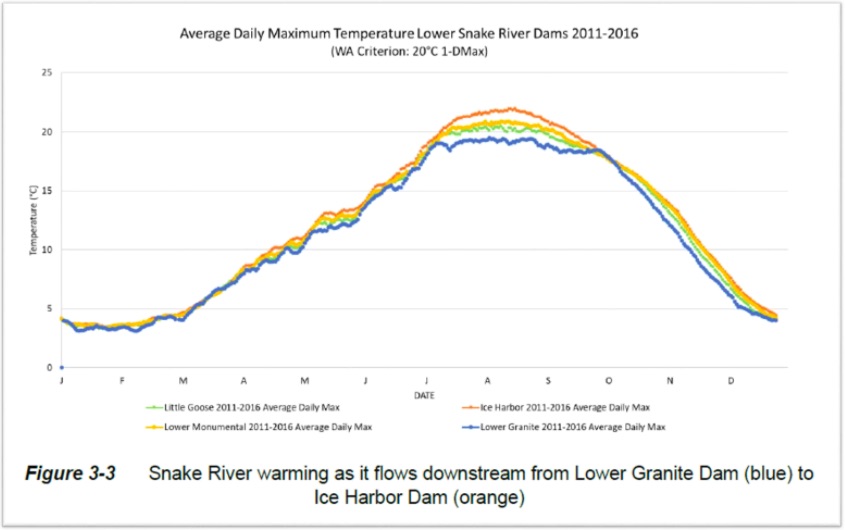forum
library
tutorial
contact

As Clock Ticks Toward Salmon Extinction,
Will Sen. Crapo Finally Step Up to the Plate?
by Shiva Rajbhandari
Idaho Statesman, June 14, 2022
|
the film forum library tutorial contact |

|
As Clock Ticks Toward Salmon Extinction,
by Shiva Rajbhandari
|
For thousands of years, indigenous peoples of the Columbia River Basin
have depended on these fish as an essential element of their cultures and diets.
 Last week, Washington's U.S. Sen. Patty Murray and Gov. Jay Inslee released their long-awaited report confirming what Idahoans have known for years: The four lower Snake River dams are driving wild salmon and steelhead to extinction, and the services the dams provide are fully replaceable.
Last week, Washington's U.S. Sen. Patty Murray and Gov. Jay Inslee released their long-awaited report confirming what Idahoans have known for years: The four lower Snake River dams are driving wild salmon and steelhead to extinction, and the services the dams provide are fully replaceable.
It has been more than a year since U.S. Rep. Simpson, R-Idaho, released his Columbia Basin Initiative, a comprehensive plan to restore the Lower Snake River, invest in energy and transportation infrastructure and finally make communities across the region whole.
Now, the clock is ticking for Northwest leaders to get a plan through Congress and appropriate funds to stop salmon extinction.
Wild salmon and steelhead are the lifeblood of Idaho's ecosystems. Before the dams were built, millions of these fish would make the 900-mile journey home from the Pacific Ocean each fall, providing nutrients for more than 137 animal species and fertilizing the banks of our waterways with their bodies.
Salmon and steelhead are also critical to the livelihoods of thousands of Idahoans, contributing to a $1.2 billion annual guiding and outfitting economy in the state.
Most importantly, for thousands of years, indigenous peoples of the Columbia River Basin have depended on these fish as an essential element of their cultures and diets. So keystone are these fish to the identities of the Northwest tribes that several tribes refer to themselves as the Way-Kan-Ush-Pum or the "Salmon Peoples."
No one quite agrees why the four Lower Snake River dams were built. Some say they were commissioned during World War II to power warship factories in Seattle. Others contend they were a pander to upstream communities, hoping to kickstart their economies with the inland ports of Lewiston and Clarkston. Others say the 1950s and '60s were simply a dam-building era when insecure politicians felt the need to assert themselves over the earth as God created it.
Whatever the reason, the Inslee-Murray report confirms that it is no more. These dams are getting more expensive, generating most of their power when the region needs it least; they are flooding upstream communities, forcing the Army Corps to build levees cutting Lewiston and Clarkston off from the Snake River; they are charging taxpayers millions of dollars in subsidies to support barging operations which are more expensive than rail; and most detrimentally, these dams are driving wild salmon, and everything they mean to Idaho communities, to extinction.
For today's youth, wild salmon and steelhead are mythical creatures our grandparents tell us about and our hockey teams are named for. We ask "Was Redfish someone's last name?" "Is the Salmon River located in Maine or Alaska?" At current rates, we may never get the opportunity to see the Northwest as it was first defined: as far as a salmon can swim.
Sen. Mike Crapo, R-Idaho, can change that.
Crapo knows how important wild rivers are to Idaho. He was a leader in the Owyhee Initiative, working with a bipartisan interstate coalition to protect nearly 5 million acres of pristine habitat for fish and the wildlife that depend on them. Yet, he has distanced himself from Rep. Simpson and other leaders who have stepped forward to tackle this problem.
Sen. Crapo has been in office longer than I've been alive. He's seen the decades-long decline in Idaho's salmon, but he has refused to even come to the table. As leaders in other states build consensus on dam breaching, Idaho needs someone willing to protect its interests. Idaho needs a champion for salmon, tribes and rural communities. Now is the time for Sen. Crapo to cement his legacy.
I urge readers to call Sen. Crapo's office and ask him how he wants to be remembered by today's youth for restoring the wild Lower Snake River and bringing our salmon home or damming these fish, and everything they mean for our communities, to extinction.
learn more on topics covered in the film
see the video
read the script
learn the songs
discussion forum
